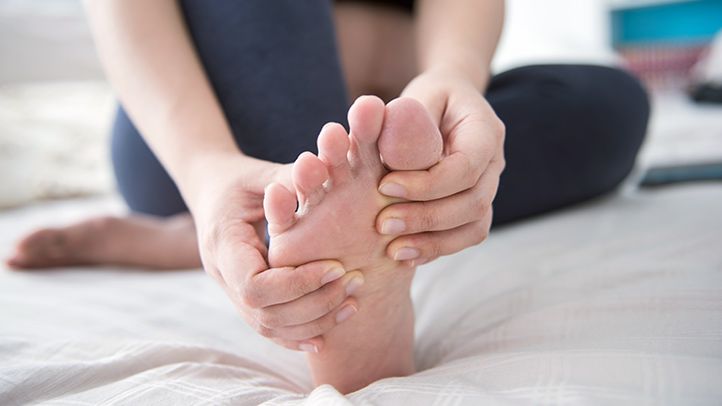High-heeled shoes have stood the test of time, spanning across centuries. The origins of these captivating shoes can be traced back to the 10th century, when Persian military personnel donned them to secure their feet in stirrups during combat. Fast forward to the present day, and high heels have become a popular choice for individuals from all walks of life, encompassing a wide range of types and styles, including sling-back, stiletto, pump, kitten, cone, and boot.
While high heels may provide assistance to those lacking in height, add elegance to a little black dress, or even capture the heart of a prince (apologies to the unfortunate stepsisters), these fashionable stilts can exact a toll on your feet, ankles, and overall body.
How your feet affect your whole body
The far-reaching impact of your feet on your entire body should not be underestimated. Comprising 26 bones, 33 joints, and over 100 muscles, ligaments, and tendons, your feet possess a complex structure and play a vital role in maintaining your balance, providing support, influencing your posture, and contributing to your overall well-being. Issues arising from high heels can disrupt this delicate equilibrium, leading to imbalances, compromised posture, persistent pain, and ongoing foot-related problems.
Hence, it is prudent to carefully consider the risks associated with high heels before embarking on your fashion choices. Sometimes, the price paid for fashion in terms of discomfort and potential health issues may not justify the allure and aesthetic appeal that high heels offer.
5 Ways Your High Heels Can Harm Your Feet and Body
1. Strains, tears and fractures
The angle a high-heeled shoe puts your foot could cause short-term and even chronic pain in the ball of your foot and toes.
“Wearing high heels places the foot in a position where the forefoot bears more weight than normal, placing more pressure on the ball of the foot and metatarsal heads or middle joints,” said Travis Jensen, DPM, a podiatrist with Banner Health in Arizona. “This excess pressure can cause pain in the joints in the ball of the foot, known as capsulitis or metatarsalgia, and can lead to stress fractures, tendon/ligament tears and contractures or stiffness.”
When you move, your Achilles tendon, the band of tissues stretching form the back of your heel all the way to your calf, lengthens and shortens. When you point your toes and raise your heels, this tendon shortens. Too much shortening, however, is a bad thing. It can lead to pain in your heels and the arches of your feet.
“High heels can reshape the calf muscles and stiffen the Achilles tendons, which can lead to issues like Achilles tendonitis and plantar fasciitis,” Dr. Jensen said.
Also, you could develop a deformity called Haglund’s deformity, or pump bump, a bony formation on your heel that’s created over time as your shoes rub up and down or press into the back of your feet.
You may also develop a heel spur, a bony growth of calcium deposit that can occur in the back of or under your heel, or beneath the sole of your foot.
Shoes with a narrow, pointed toe force your toes into an unnatural V-shape. If you wear high heels every day, over time they could cause toe deformities such as hammertoes or claw toes, bunions, corns and calluses and ingrown toenails.
“Excess or abnormal stress on the joints due to the altered position and gait can lead to arthritis and pain,” Dr. Jensen said.
Sometimes pointy-toed shoes can even irritate and inflame the nerves enough to cause nerve conditions in the feet, such as Morton neuroma.
Feel like you are teetering side to side in your heels? Be careful as you could twist your ankle.
“High heels can also put the foot and ankle in an unstable position, which can increase your risk for ankle sprains and other injuries,” Dr. Jensen said. As your body attempts to stabilize the foot in this position, muscles that usually may not be used for this can become fatigued, inflamed or injured.”
Generally, the higher the heel the more unstable your foot position and the higher the risk of pain and injury.
5. Knee and back pain
As you work to keep your body balanced on your heels, the rest of your body is having to adjust as well.
“Heels don’t just alter the way your foot functions, they also affect the body mechanics of how you walk, stand and carry yourself,” Dr. Jensen said. “This can put undue stress on your knees, hips and lower back.
While the pain may be mild at first, wearing high heels everyday can lead to chronic pain and arthritis.
How to avoid injuries from high-heeled shoes
If you adore the aesthetic and find pleasure in donning high heels, we understand your inclination. However, if you’re reluctant to part ways with your beloved heels, consider these suggestions to minimize the likelihood of discomfort and injury.
1. Lower the height. It may seem obvious, but opting for lower heels provides respite from the pain associated with high heels. The agony caused by high heels stems from the abnormal distribution of weight, which can contribute to issues like hammer toes, bunions, and blisters.
2. Prioritize the perfect fit. Always have your feet measured before purchasing a new pair of heels. Over time, the ligaments in your feet stretch, affecting their length and width. Ill-fitting heels are nothing short of excruciating.
3. Allow for some wiggle room. Seek out rounded or open-toed shoes that offer more space for your toes in the toe box. Additionally, a soft insole can help alleviate strain on your feet.
4. Take breaks. Limit the duration and extent of walking in heels. It’s advisable to keep a second pair of flat shoes handy so that you can give your feet a break when they begin to ache.
5. Embrace flats. You need not wear high heels every single day. There are comfortable and professional flat shoe options available for you to choose from.
6. Strengthen your core and back. A robust back and core provide extra support to your lower extremities and improve your balance.
7. Seek professional advice when experiencing pain. While the adage “no pain, no gain” holds true in certain scenarios, it’s important to consult a healthcare provider or podiatrist if your footwear is causing persistent pain. Doing so can help mitigate the risk of long-term injury and discomfort.
Takeaway:
While some individuals prioritize fashion over functionality when it comes to heels, it’s crucial to recognize that wearing high-heeled shoes can have detrimental effects on your toes, feet, ankles, and overall well-being, leading to a variety of injuries.





